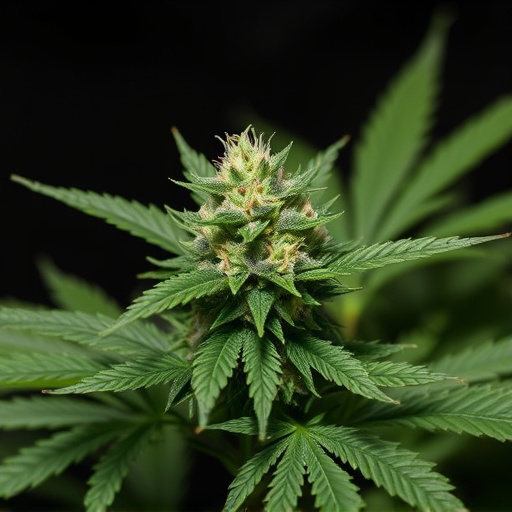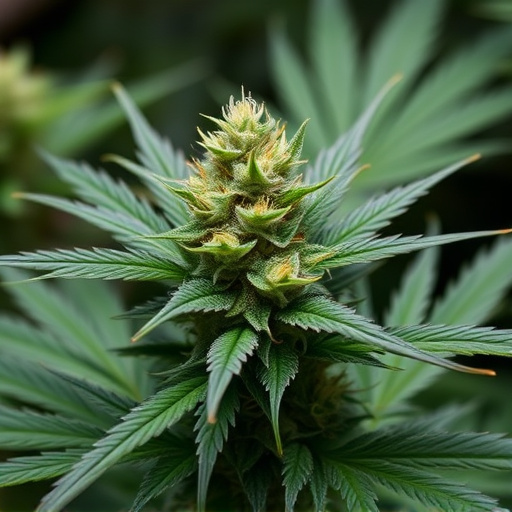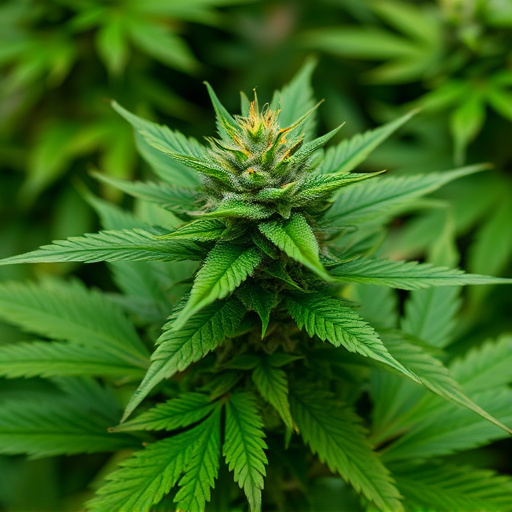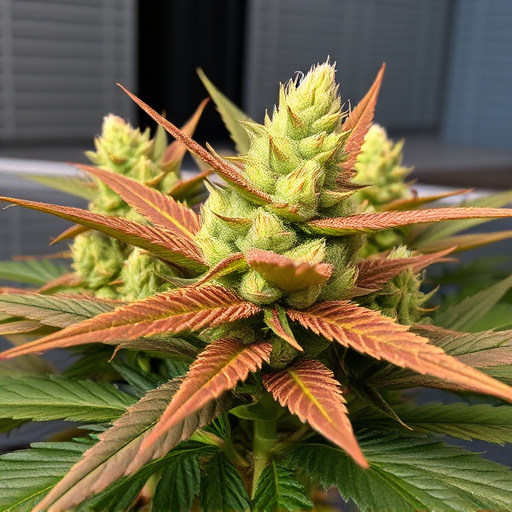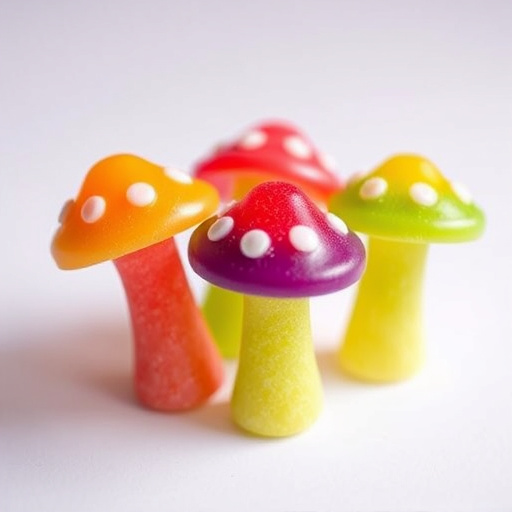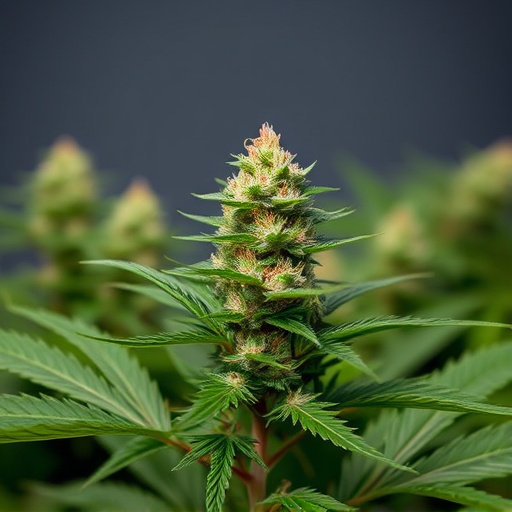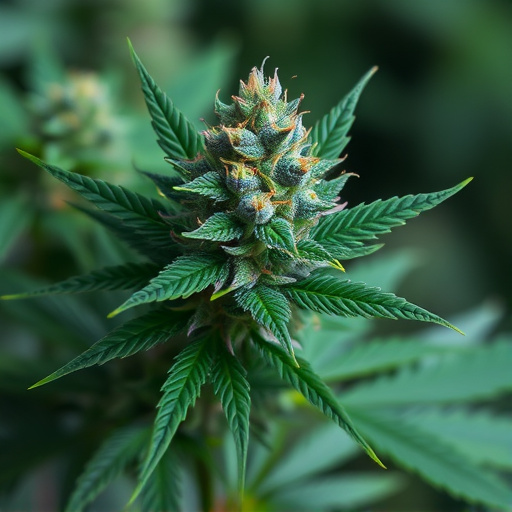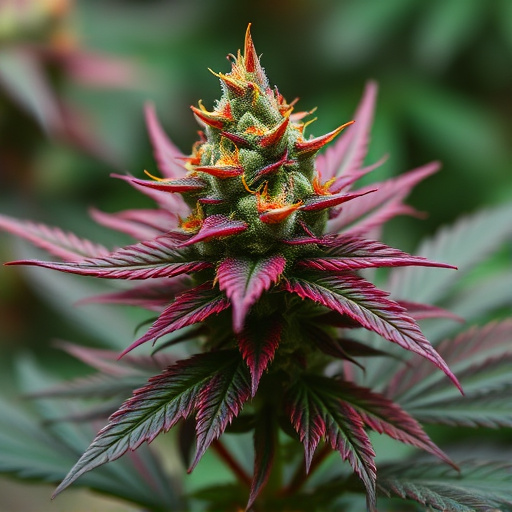The science behind cannabis pigmentation reveals how anthocyanins and flavonoids create its diverse colors, which serve as natural antioxidants protecting the plant from stress. Specific flavonoid profiles in cannabis strains are linked to heightened calming effects for anxiety relief. Cultivators can manipulate environmental factors like temperature, light, nutrients, and stress to optimize pigment expression, enhancing therapeutic potential. Cannabis strains for anxiety relief exhibit unique color palettes, guiding consumers to make informed choices based on both science and personal preference through visual cues.
Unravel the captivating transformation of cannabis flowers as they change color with this comprehensive guide. Discover the science behind their pigmentation, where chemical compositions create vibrant hues. Explore how environmental factors, from sunlight exposure to temperature, play a pivotal role in these visual shifts. Delve into specific cannabis strains renowned for their anxiety-relieving properties and unique visual characteristics, offering both aesthetic appeal and therapeutic benefits.
- The Science Behind Cannabis Pigmentation: Understanding the Chemical Composition
- How Environmental Factors Influence Color Changes in Cannabis Flowers
- Exploring Cannabis Strains for Anxiety Relief and Their Visual Characteristics
The Science Behind Cannabis Pigmentation: Understanding the Chemical Composition
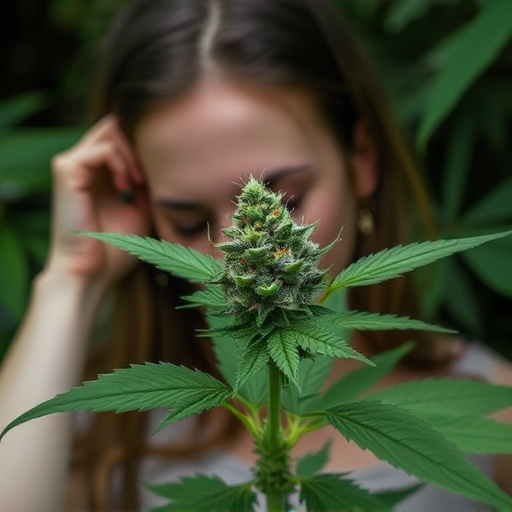
The science behind cannabis pigmentation delves into the intricate chemistry of this fascinating plant. Cannabis flowers exhibit a range of colors, from vibrant greens to rich browns and even purples, all thanks to specialized pigments known as anthocyanins and flavonoids. These compounds are not only responsible for the visual allure but also play a crucial role in the plant’s interaction with its environment.
Anthocyanins, for instance, act as natural antioxidants, protecting the cannabis strain from oxidative stress caused by UV radiation and environmental stressors. In terms of cannabis strains for anxiety relief, specific flavonoid profiles have been linked to enhanced calming effects. Understanding these chemical compositions allows cultivators to carefully nurture plants, ensuring optimal pigment expression and, consequently, maximizing therapeutic potential for various applications.
How Environmental Factors Influence Color Changes in Cannabis Flowers

Environmental factors play a significant role in the color transformation of cannabis flowers, which can vary from vibrant green to rich purple or even golden hues. The process is influenced by several key elements. Temperature and light exposure are primary drivers; changes in these conditions during the flowering phase can prompt the plant to adjust its pigment production. For instance, cooler temperatures and lower light intensity often lead to more intense colors as the plant compensates for reduced energy absorption.
Additionally, nutrient availability and stress factors contribute to color variation. Certain nutrients, like antioxidants and carotenoids, affect the final shade. Stressors such as drought or pest infestations can also trigger color changes as the plant’s metabolism shifts to protect itself. Understanding these influences is essential for cultivators aiming to breed cannabis strains for anxiety relief or other therapeutic benefits, as desired traits may be enhanced or influenced by precise control over environmental conditions during cultivation.
Exploring Cannabis Strains for Anxiety Relief and Their Visual Characteristics
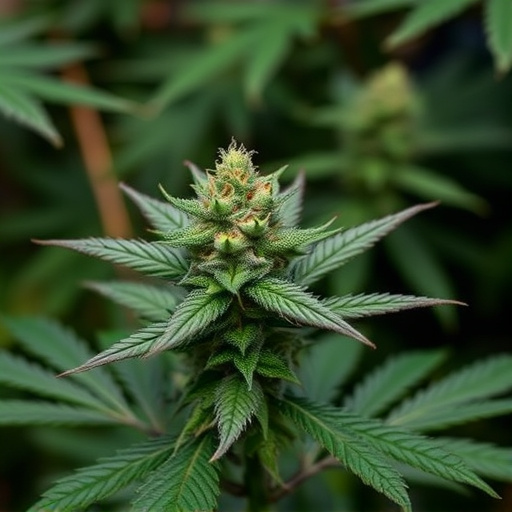
Cannabis has long been recognized for its potential to alleviate various conditions, including anxiety, and one interesting aspect of this plant is how different strains can present visually distinct characteristics. When exploring cannabis strains for anxiety relief, their visual appearance can offer valuable insights. Each strain’s unique color palette, from earthy tones to vibrant hues, often corresponds to specific chemical profiles that influence their therapeutic effects.
For instance, many cannabis strains known for their calming and anti-anxiety properties tend to showcase a wide range of green shades, sometimes mixed with subtle hints of yellow or blue. These colors are believed to be associated with the presence of cannabinoids like THC and CBD, which play pivotal roles in modulating mood and reducing anxiety. Visual characteristics can serve as a starting point for individuals seeking cannabis strains that might help manage their anxiety symptoms, leading them to make informed choices based on both scientific understanding and aesthetic preferences.
Cannabis flower color changes are a fascinating result of complex interactions between its chemical composition and environmental influences. Understanding these factors not only deepens our appreciation for the plant’s beauty but also guides us in selecting specific cannabis strains for their therapeutic properties, such as those beneficial for anxiety relief. By recognizing how different colors correspond to unique chemical profiles and effects, we can navigate the diverse landscape of cannabis strains more effectively, ensuring a personalized and optimal experience.
